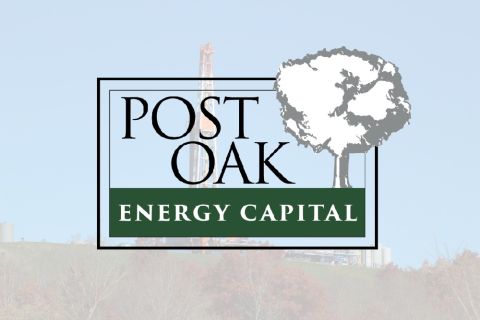Fears that the U.S. may go over the “fiscal cliff” in 2013 saw markets take a nosedive the second week of November. Energy-commodity markets were not left undisturbed in this downturn with natural gas liquids (NGL) price, in particular, tailing off at both hubs.
While other commodities fell in value for the week of November 7, natural gas prices improved at both Conway and Mont Belvieu due to another cold front sweeping the Northeast. This cold front caused heating demand to rise even as some communities continued to struggle with power losses following the impact of Hurricane Sandy several weeks ago.
According to Andrew Coleman, managing director of E&P research at Raymond James, Equity Capital Markets, natural gas prices will continue to improve throughout the next 12 months.
“The news for natural gas is slowly improving. We’re following a very warm winter that caused natural gas prices to collapse,” he said while speaking at last week’s DUG East conference in Pittsburgh, Pennsylvania.
While natural gas production will remain high, Raymond James anticipates that the natural gas market won’t face the same headwinds in the coming winter and has forecast natural gas prices for approximately $3.75 for 2013 and to $4.25 on a long-term basis.
The Conway price for natural gas increased 4% to $4.30 per million Btu (/MMBtu) as supplies were diverted toward the East Coast. Mont Belvieu natural gas prices rose 3% to $3.55/MMBtu.
Lower NGL prices and increased natural gas prices saw frac spread margins fall across the board at both Conway and Mont Belvieu. The largest drop in margin was for ethane, which dropped 62% at Conway following a 13% drop in price to 16¢ per gallon (/gal), its lowest price in two months. The Mont Belvieu price was relatively stable at 28¢/gal, but the margin fell another 21% and left it technically profitable, although once transportation costs are factored in, producers also face negative margins in most instances at the hub.
Propane margins also fell at a double-digit pace for the week as the Conway margin decreased 10% and the Mont Belvieu margin moved down 11%. Prices also moved in a similar manner between the two hubs with the Mont Belvieu price dropping 6% to 91¢/gal, its lowest price since it was 87¢/gal the week of September 19.
While crude oil prices remained stable around $85 per barrel (/bbl.), this is on the very low end for crude. Weak crude price combined with a growing separation between crude and heavy NGL prices, saw butane, isobutane and C5+ fall across the board and suffer reduced frac spread margins.
The theoretical NGL barrel price was down 4% at both hubs with the Conway price down to $38.96/bbl. with an 8% drop in margin to $25.67/bbl. and the Mont Belvieu price at $43.18/bbl. with a 6% drop in margin to $30.21/bbl.
The most profitable NGL to make at both hubs remained C5+ at $1.68/gal at Conway and $1.76/gal at Mont Belvieu. This was followed, in order, by isobutane at $1.33/gal at Conway and $1.46/gal at Mont Belvieu; butane at $1.18/gal at Conway and $1.25/gal at Mont Belvieu; propane at 47¢/gal at Conway and 59¢/gal at Mont Belvieu; and ethane at negative 9¢/gal at Conway and 5¢/gal at Mont Belvieu.
This week marked the official beginning of the heating season as storage levels are finally decreasing, which should allay any fears that natural gas storage levels will reach full capacity this year. Natural gas in storage for the week of November 9 decreased 18 billion cubic feet to 3.911 trillion cubic feet (Tcf) from 3.929 Tcf the previous week, according to the Energy Information Administration. This was 2% higher than the 3.840 Tcf figure reported last year at the same time and 6% greater than the five-year average of 3.702 Tcf.
Heating demand may not remain quite as high this week as the National Weather Service’s forecast for this week is calling for normal temperatures in the Northeast, Mid-Atlantic, and Gulf Coast regions as we head into Thanksgiving. The Southeast is expected to experience colder than normal temperatures. However, the rest of the country is expected to experience warmer-than-normal temperatures.

Data Provided by Intercontinental Exchange. Individual product prices in
cents per gallon. NGL barrel in $/42 gallons | Source: Frank Nieto

Price, Shrink of 42-gal NGL barrel based on following: Ethane, 36.5%; Propane, 31.8%; Normal Butane, 11.2%; Isobutane, 6.2%; Pentane+, 14.3%, Fuel, frac, transport costs not included. Conway gas based on NGPL Midcontinent zone, Mont Belvieu based on Houston Ship Channel. Shrink is defined as Btus that are removed from natural gas through the gathering and processing operation. Source: Frank Nieto
Contact the author, Frank Nieto, at fnieto@hartenergy.com
Recommended Reading
Private Equity Gears Up for Big Opportunities
2024-10-04 - The private equity sector is having a moment in the upstream space.
Post Oak Backs Third E&P: Tiburon Captures Liquids-rich Utica Deal
2024-10-15 - Since September, Post Oak Energy Capital has backed new portfolio companies in the Permian Basin and Haynesville Shale and made an equity commitment to Utica Shale E&P Tiburon Oil & Gas Partners.
Matador Offers $750 Million in Senior Notes Following Ameredev Deal
2024-09-20 - Matador Resources will offer $750 million in senior notes following the close of its $1.83 billion Ameredev II acquisition.
Carbon Removal Company Equatic Appoints New CEO
2024-11-18 - Equatic appointed a new CEO in preparation to launch the world’s largest ocean-based carbon removal plant.
Exclusive: How E&Ps Yearning Capital can Stand Out to Family Offices
2024-10-15 - 3P Energy Capital’s Founder and Managing Partner Christina Kitchens shares insight on the “educational process” of operators looking at opportunities in the U.S. and how E&Ps looking for capital can interest family offices, in this Hart Energy Exclusive interview.
Comments
Add new comment
This conversation is moderated according to Hart Energy community rules. Please read the rules before joining the discussion. If you’re experiencing any technical problems, please contact our customer care team.





